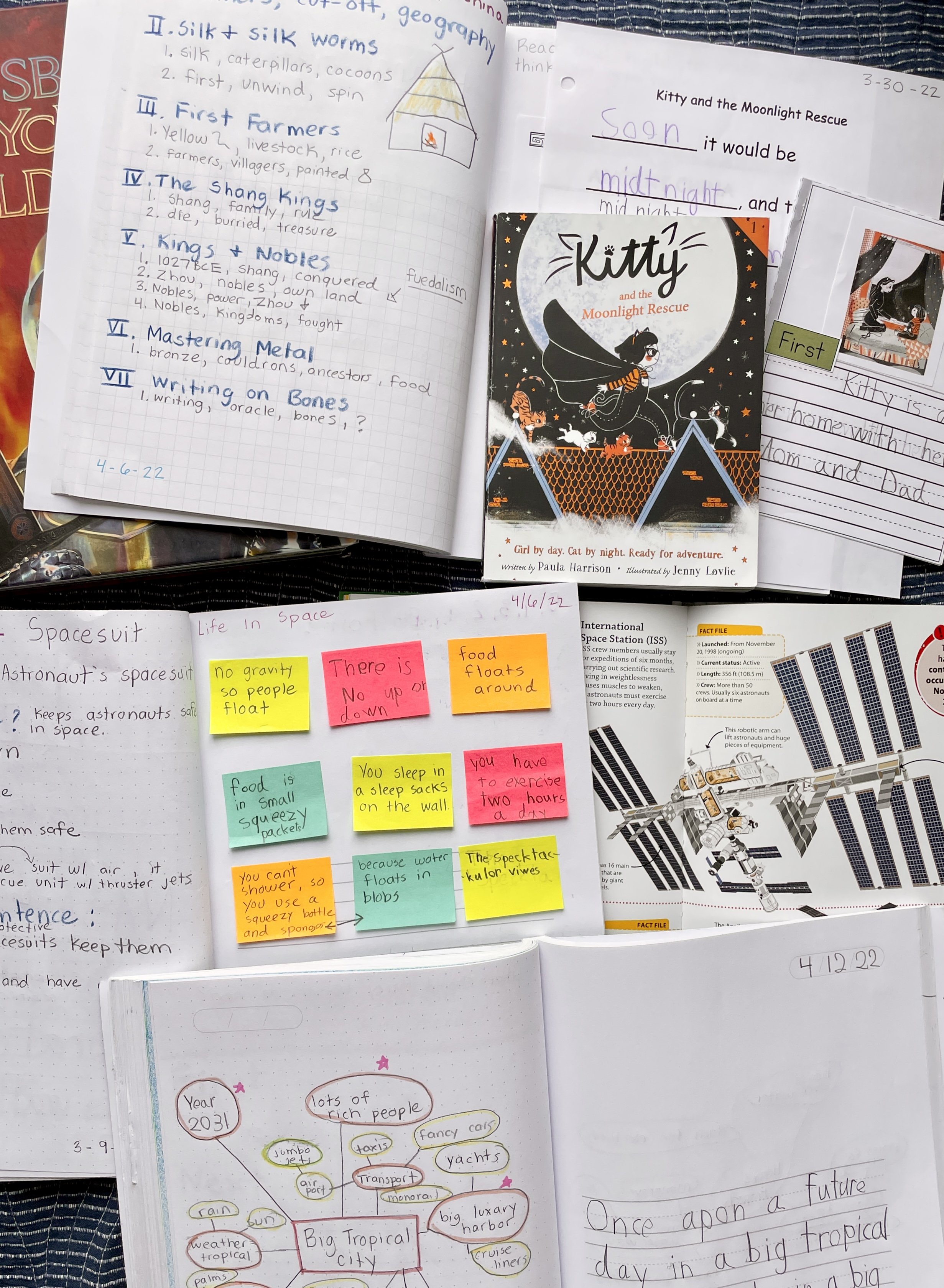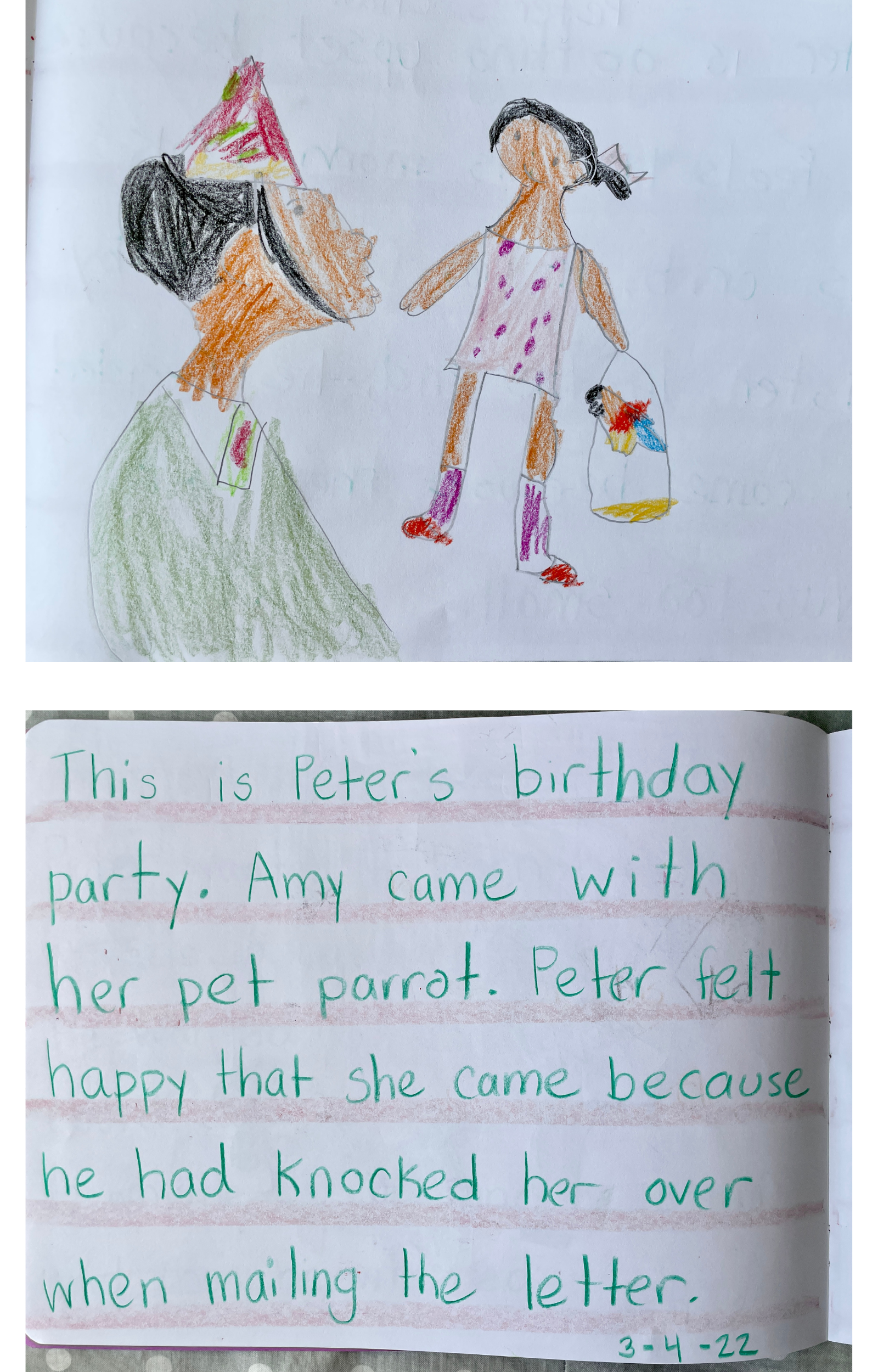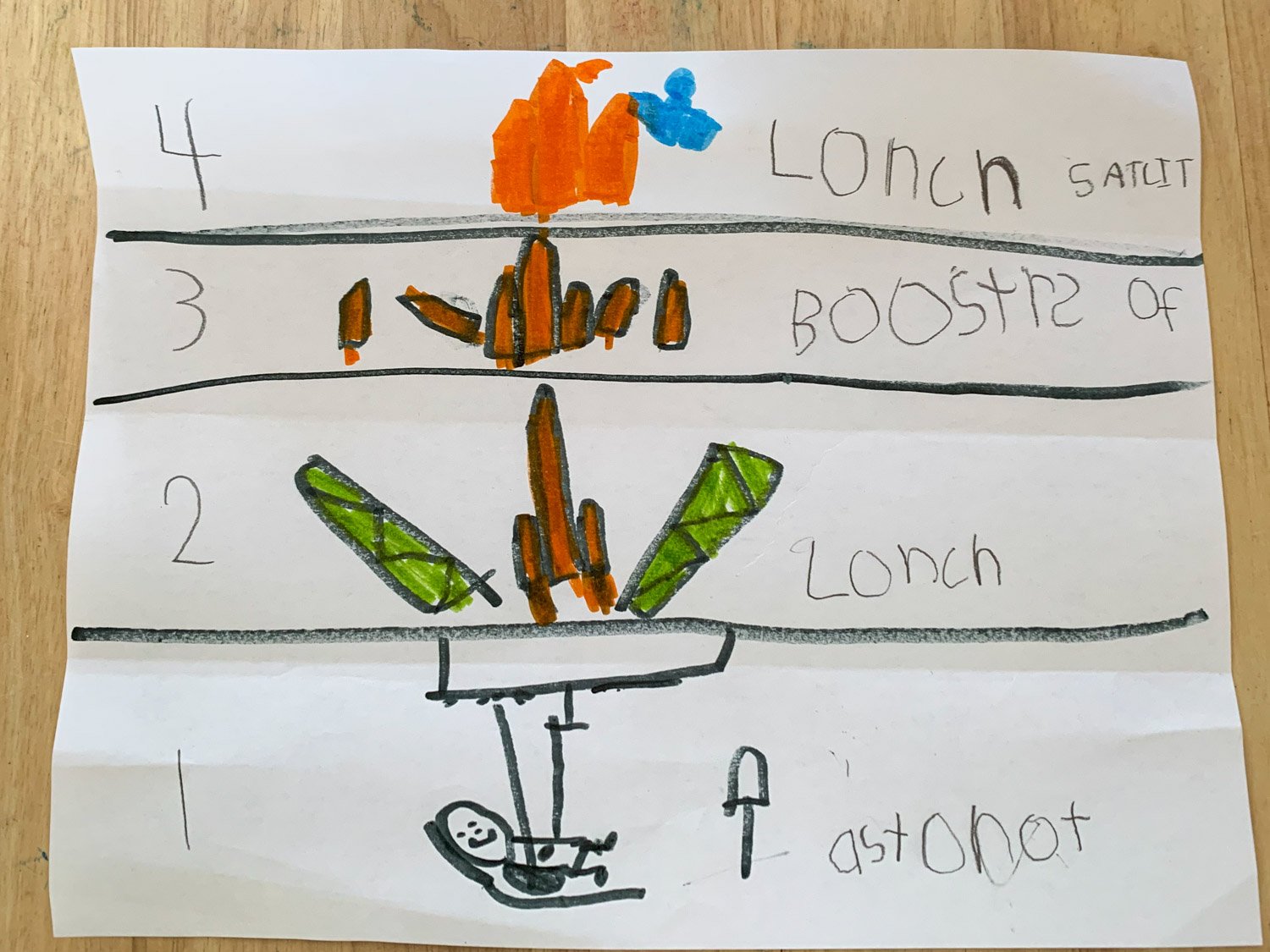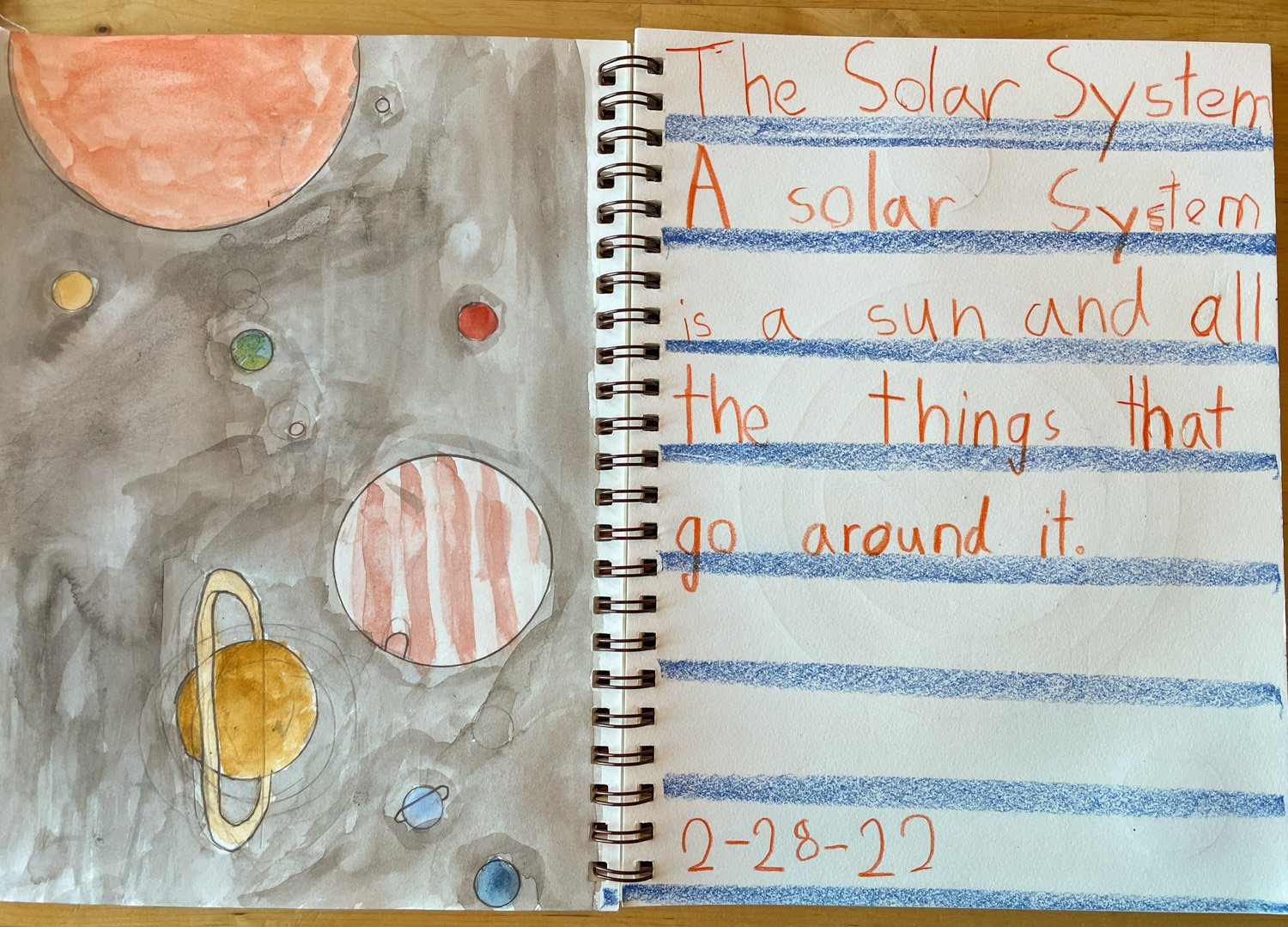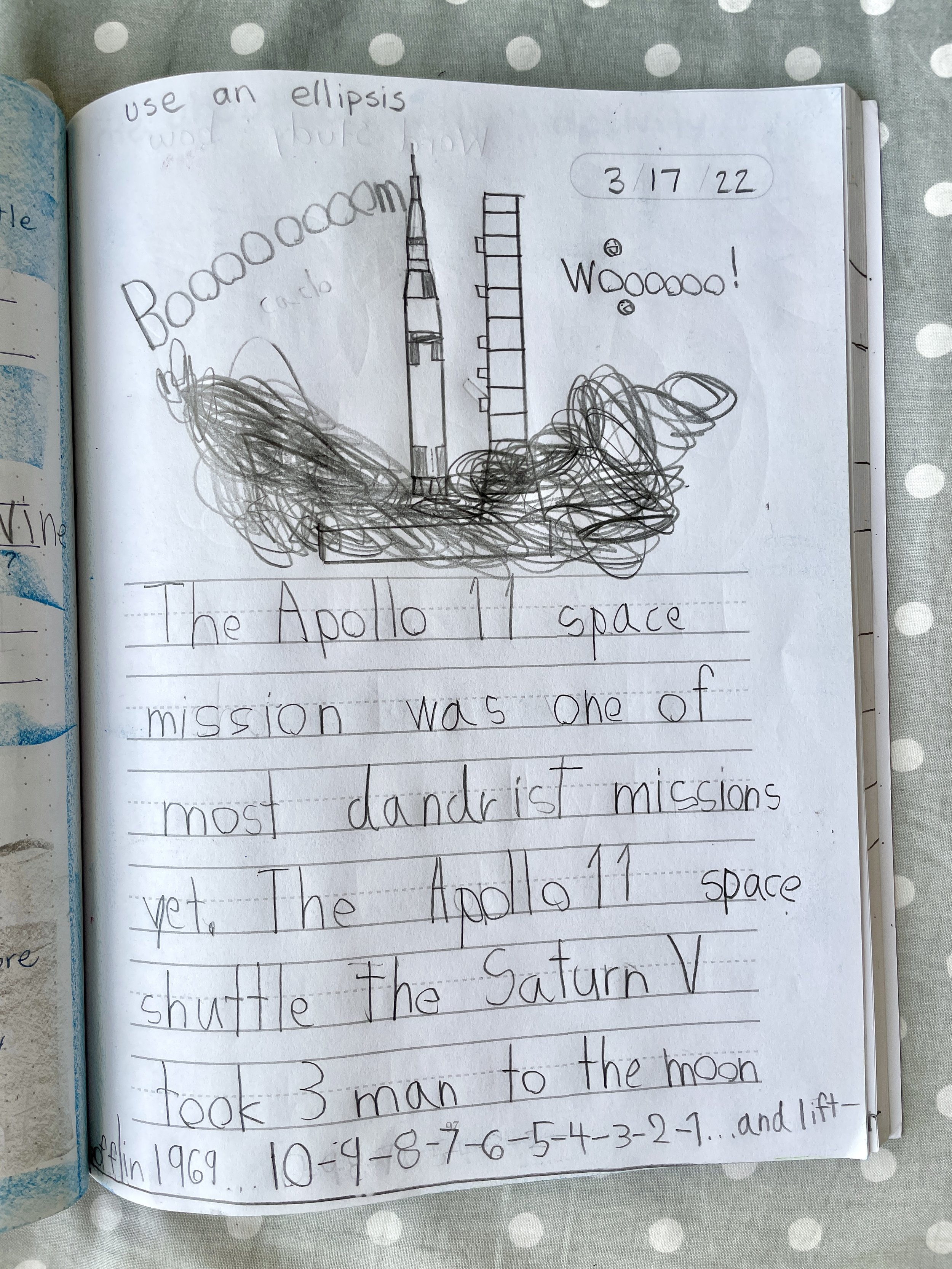writing in the primary years
In many ways, writing is one of the most complex subjects to teach. There are so many components that go into a piece of written work — including ideas, organization, mechanics, voice, and more. Now, let's bring this down to the elementary level — children have to not only think of the idea or synthesize information, but they also have to get that idea from their head to the paper (or device) with their developing skill set (spelling, handwriting, stamina, etc.). This effort is a big ask of kids, especially children in the beginning stages of writing (6-9 yrs).
Here's what we know:
Children are natural storytellers
Writing across the content areas promotes retention
Many components go into "writing"
Writing develops over time
Children experience cognitive overload when we require them to use too many mental resources/space
So, what can we do?
Value multiple forms of storytelling (oral, pretend play, picture narration, written, etc.)
Try to balance a variety of writing opportunities/outputs across content areas throughout the week/month
Consider breaking down the different writing components so that an assignment has a specific focus — allowing a child to focus on one or two elements of writing at a time
For more info on research and best practices in writing instruction, I have some resources linked here.
Recommended Writing Curricula
Pre-K
In the preschool and pre-kindergarten years, the best thing we can do for our children is to support their innate storytelling and rich imagination. This might include:
Retelling stories orally and or with props (toys)
Noticing when a child tells a story through play, pictures, or talking
Identifying children as storytellers — "Tell me about your picture. Can I write your words for you?"
Some children begin to form letters in the preschool and pre-kindergarten years. While direct handwriting instruction is not necessary at this age, teaching children correct letter formation when they first start forming letters makes handwriting easier down the road (and yes, handwriting instruction is important. See here and here.)
This might include:
Parent/Caregiver noticing child forming letters and helping them form them correctly using phrasing from a handwriting curriculum (I recommend HWT or the handwriting components of Pinwheels 1).
Using a handwriting curriculum like HWT.
Story retelling through picture and narration, 5yrs old
Kindergarten
In the early years, reading and writing instruction are very entwined. You have several options when choosing reading and writing curricula for a kindergarten (or beginning reader/writer) student.
A complete program like Pinwheels: Pinwheels, by Rooted in Language, offers a comprehensive literacy program for beginning readers and writers. The Pinwheels program includes phonemic awareness, phonics, handwriting, grammar, word study, reading, and writing.
Select individual components based on your child's needs: If you have already selected a foundational reading skills curriculum, you can add a writing program based on your child's needs and your homeschool style. Some families opt to focus on foundational reading skills and narration in kindergarten. Others opt to begin foundational writing alongside foundational reading.
Piece together different elements of writing. See this post on Instagram for more details and the writing highlights section).
Rocket launch diagram and inventive spelling “astronaut, launch, boosters off, launch satellite”, 5.5 years old
If you are looking for a foundational writing program for kindergarten, I recommend:
IEW's Primary Arts of Language: Writing Part I (and possibly Part II)
The Writing Revolution with modifications (orally unless a child is very interested in writing it on their own)
First & Second Grade
As you progress through the primary years, you can follow the progression from kindergarten choices (listed above), make adjustments based on your child's needs, or add a new element.
Some possible tracks:
Pinwheels 3/4 or The Wand from Rooted in Langauge. Depending on your child's kindergarten experience and current reading skills, you could move into PW 3 or The Wand. If your child has already mastered the phonics components of PW 3 or The Wand, you can apply the other elements to your child's current reading and writing.
IEW's Primary Arts of Language: Writing (Part II or III based on needs)
IEW's theme-based writing, People and Places in Our Community
And or IEW's parent/instructor course, Teaching Writing: Structure and Style (Units 1, 2, 3, & 7)
The Writing Revolution with modifications (see the suggested pacing in the back of the book and note what elements should be oral, shared writing, and independent writing). Also, check out the old version, The Hochman Method, which can be found for free here and here: Part 1 & Part 2.
I have a bit more on how we have done writing during 1st grade here and here.
Content-area copywork sample, 7.5yrs
Independent writing sample, 7.5 yrs
Check out this YouTube video for more information about IEW and a detailed look inside their primary years offerings.
For more on our selections over the years and what has worked for us, check out the Writing Section on my website.


